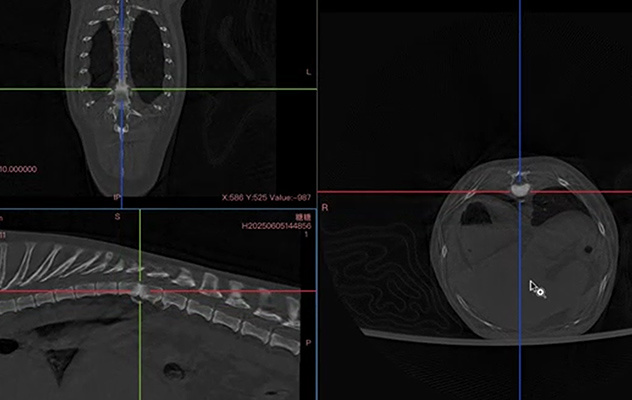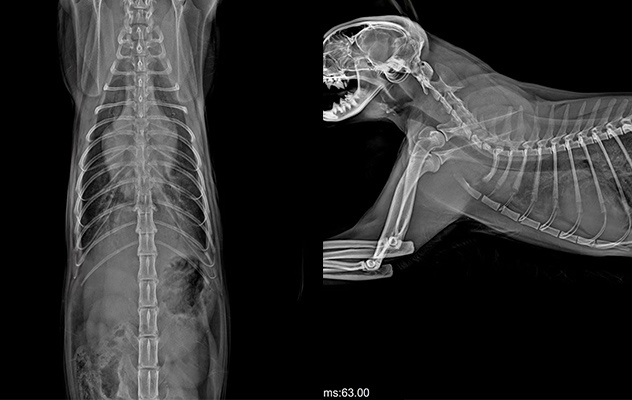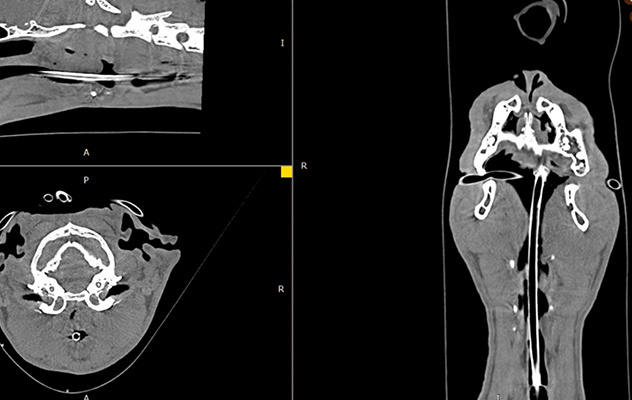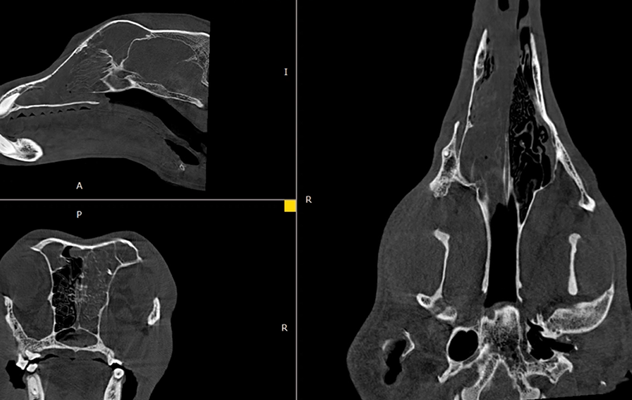Cases
Case of Intervertebral Disc Herniation in a Vietnamese French Bulldog
Bun, a 5-year-old French Bulldog.Within the last month, Bun began showing unusual symptoms: a stiff neck, severe pain with every head movement, accompanied by a wobbly gait, loss of balance, and nystagmus (eye twitching)—clear signs of nerve damage in the neck area, indicating possible spinal cord compression.Simply put, Bun has a cervical disc herniation. The gelatinous center of the disc slipped out and is compressing the nerve roots or the spinal cord directly. This causes pain, difficulty turning his neck, and makes him walk with a stagger. If left untreated, this condition could affect all four limbs, causing weakness, loss of reflexes, or even muscle atrophy. This is a dangerous sign, requiring early intervention to avoid irreversible nerve damage. Bang Pham Veterinary Hospital has a team of doctors specializing in spinal surgery who have successfully performed many complex procedures related to the vertebrae and spinal cord in dogs and cats.
Learn moreCase of Teddy's Body Rigidity
Pet: Tangtang (male Teddy) Age: 6 years and 10 months Chief Complaint: The dog got lost during a walk for half an hour. After returning home, it appeared restless and had a rigid body. Diagnosis: CT scan upon admission revealed mild stenosis of the T12-T13 intervertebral space, suspected to be caused by external force-induced intervertebral space compression and local inflammation.
Learn moreCase of Feline Pulmonary Edema
Textbook-level Imaging: Severe Pulmonary Edema Caused by a Cat's Heart Attack
Learn moreCase of Feline Nasopharyngeal Polyp
Diagnosis and Treatment of Feline Nasopharyngeal Polyps Feline nasopharyngeal polyps are benign, pedunculated masses that typically originate from the middle ear or the wall of the auditory tube and extend into the nasopharynx and external ear canal. Their cause is not yet clear, but they may be related to chronic inflammation. Key CT diagnostic findings include: homogeneous soft tissue density in the tympanic bulla, nasopharyngeal region, and/or auditory tube; thickening of the affected tympanic bulla bone; and moderate ring enhancement after contrast administration. Treatment plans usually involve surgical removal of the polyp to prevent further growth and complications. Post-operative regular check-ups are necessary to ensure the polyp is completely removed and to monitor for any recurrence.
Learn moreIntroduction to cases of canine nosebleeds
Nosebleeds in dogs (canine epistaxis) may be related to systemic diseases, such as coagulation disorders, vasculitis, or systemic arterial hypertension, or to local lesions in the nasal cavity, such as tumors, trauma, foreign bodies, or chronic rhinitis. The most common cause of epistaxis in middle-aged to older dogs is intranasal tumors, with adenocarcinoma and sarcoma being the most frequent types. Additionally, Transmissible Venereal Tumors (TVT) can also lead to nosebleeds, although this is less common. As an advanced imaging modality, CT can clearly visualize the internal structures of the nasal cavity, playing a crucial role in surgical planning, early detection, and treatment.
Learn more
Telephone/WhatsApp:
+86 13751032495
Email:
kobe@vetoo-med.com
Wechat:
kobe13751032495
Add:
Room 801 & 901, Building2, Zhenfa Yungu, 176-100 Jiangshi Road, Guangming District, Shenzhen, Guangdong, China
Copyright © 2025 Shenzhen Vetoo Medical Technology Co., Ltd. All Rights reserved.








